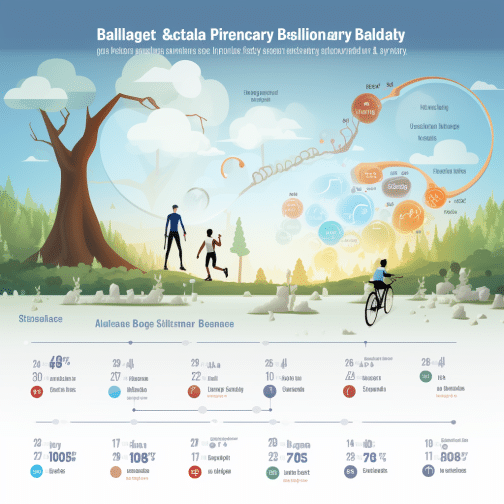The Connection Between Exercise and Diabetes
 Exercise and Diabetes
Exercise and Diabetes
Introduction
Exercise is an important part of a healthy lifestyle, and it can have a major impact on your risk of developing diabetes. Studies have shown that regular physical activity can help reduce the risk of type 2 diabetes, and it can also help people with diabetes manage their condition. Exercise can help to lower blood sugar levels, improve insulin sensitivity, and reduce the risk of complications associated with diabetes.
The connection between exercise and diabetes is clear: regular physical activity can help to reduce the risk of developing diabetes, and it can also help people with diabetes manage their condition. Exercise can help to lower blood sugar levels, improve insulin sensitivity, and reduce the risk of complications associated with diabetes. So, if you’re looking to stay healthy and happy, make sure to include exercise in your daily routine.
Exercise and Diabetes: What is the Connection?
Exercise is an important part of a healthy lifestyle, and it can have a positive impact on diabetes. Studies have shown that regular physical activity can help people with diabetes better manage their blood sugar levels. Exercise can also help reduce the risk of developing type 2 diabetes.
When it comes to diabetes, exercise can help improve insulin sensitivity, which helps the body use insulin more effectively. Exercise can also help reduce the risk of cardiovascular disease, which is a common complication of diabetes. Regular physical activity can also help reduce stress and improve overall mental health.

Exercise and diabetes go hand in hand. Regular physical activity can help people with diabetes better manage their blood sugar levels, reduce the risk of developing type 2 diabetes, and improve overall mental health. So, if you have diabetes, make sure to get regular exercise and stay active to help keep your diabetes under control.
While Type 1 diabetes is an autoimmune condition that can’t be prevented through lifestyle changes, exercise remains an essential component of managing this form of diabetes:
1. Blood Sugar Balance
Exercise can affect blood sugar levels in individuals with Type 1 diabetes. It’s crucial to monitor blood sugar before, during, and after physical activity to adjust insulin doses or carbohydrate intake as needed.
2. Improved Insulin Efficiency
Similar to Type 2 diabetes, exercise enhances insulin efficiency in those with Type 1 diabetes. This can lead to more predictable and stable blood sugar levels.
3. Cardiovascular Benefits
Exercise supports cardiovascular health in people with Type 1 diabetes, reducing the risk of heart disease, which can be a concern for those managing this condition over the long term.

The Benefits of Exercise for Diabetes Management
Exercise is an important part of managing diabetes. Regular physical activity can help you control your blood sugar levels, reduce your risk of heart disease, and improve your overall health. Exercise can also help you lose weight, which is important for people with diabetes. Studies have shown that people with diabetes who exercise regularly have better blood sugar control and improved insulin sensitivity.
Exercise can also help reduce stress and improve your mood. People with diabetes often experience depression and anxiety, and exercise can help reduce these symptoms. Exercise can also help you sleep better, which is important for managing diabetes.
The key to getting the most out of exercise is to find activities that you enjoy and that fit into your lifestyle. Whether it’s walking, running, swimming, or biking, make sure to get at least 30 minutes of physical activity each day. This will help you manage your diabetes and lead a healthier, happier life.
Understanding the Different Types of Exercise
Exercise is an important part of managing diabetes. It helps to regulate blood sugar levels, improve circulation, and reduce stress. But not all exercise is created equal when it comes to diabetes. It’s important to understand the different types of exercise and how they can help manage diabetes.
Aerobic exercise, such as walking, running, swimming, and cycling, is great for improving cardiovascular health and can help to reduce the risk of diabetes-related complications.
Strength training, such as weightlifting, can help to build muscle and improve insulin sensitivity.
Finally, flexibility exercises, such as yoga and stretching, can help to improve range of motion and reduce stress.
By understanding the different types of exercise and how they can help manage diabetes, you can create a healthy exercise routine that works for you. Exercise can be an important part of a healthy lifestyle and can help to reduce the risk of diabetes-related complications.
Creating an Exercise Plan for Diabetes Management
Exercise is an important part of managing diabetes. Regular physical activity can help you control your blood sugar levels, reduce your risk of heart disease, and improve your overall health. Exercise can also help you lose weight, which is important for people with diabetes.
When it comes to exercise and diabetes, it’s important to create a plan that works for you. Start by talking to your doctor about what type of exercise is best for you. They can help you create a plan that fits your lifestyle and health needs. Once you have a plan in place, make sure to stick to it. Regular exercise can help you manage your diabetes and improve your overall health.

Tips for Sticking to an Exercise Routine
Exercising regularly is an important part of managing diabetes. Studies have shown that regular physical activity can help to reduce blood sugar levels, improve insulin sensitivity, and reduce the risk of developing type 2 diabetes. Exercise can also help to reduce stress, improve sleep, and boost overall health.
When it comes to exercise and diabetes, consistency is key. It’s important to find an exercise routine that works for you and stick to it. This could mean going for a walk every day, joining a gym, or taking a yoga class. Whatever you choose, make sure it’s something you enjoy and can do on a regular basis.
By making exercise a part of your daily routine, you (exercise and diabetes) can help to manage your diabetes and improve your overall health. So get moving and start reaping the benefits of exercise today!
Practical Tips for Exercising with Diabetes
Regardless of the type of diabetes you have, it’s important to approach exercise thoughtfully:
1. Consult Your Healthcare Team
Before starting a new exercise routine, consult your healthcare provider. They can help you determine the most suitable types and amounts of physical activity based on your individual health status and diabetes management plan.
2. Monitor Blood Sugar Levels
Regularly monitor your blood sugar levels, especially when beginning a new exercise program. Understanding how exercise affects your blood sugar is crucial for maintaining control.
3. Stay Hydrated
Proper hydration is essential during exercise. Dehydration can affect blood sugar levels and overall performance.
4. Carry Supplies
If you use insulin or medication to manage your diabetes, carry necessary supplies (insulin, glucose tablets, or a glucagon kit) when you exercise in case of emergencies.
5. Choose Activities You Enjoy
Engage in activities you enjoy to make exercise a sustainable part of your routine. This could be walking, cycling, dancing, swimming, or anything that gets you moving.
6. Be Consistent
Consistency is key to reaping the benefits of exercise. Aim for regular activity throughout the week.
Conclusion
In conclusion, it is clear that exercise and diabetes are closely linked. Regular physical activity can help to reduce the risk of developing type 2 diabetes, and can also help to manage the symptoms of those who already have the condition. Exercise can also help to reduce the risk of other health complications associated with diabetes, such as heart disease and stroke. (exercise and diabetes)
It is important to remember that exercise should be done in moderation, and that it should be tailored to the individual’s needs. Everyone should consult with their doctor before beginning any exercise program, and should be sure to follow their doctor’s advice. With the right approach, exercise can be an important part of a healthy lifestyle and can help to reduce the risk of developing diabetes and its associated complications.
In conclusion, exercise is an important part of diabetes management. It can help to reduce blood sugar levels, improve insulin sensitivity, and reduce the risk of developing diabetes-related complications. Exercise can also help to improve overall health and wellbeing. When creating exercise and diabetes plan, it is important to understand the different types of exercise and to find activities that are enjoyable and sustainable. Additionally, exercise and diabetes it is important to set realistic goals and to find ways to stay motivated and stick to the plan. With the right plan and dedication, exercise can be an effective tool for managing diabetes and improving overall health.
Frequently Asked Questions
Q1: What is the connection between exercise and diabetes?
Exercise is an important part of managing diabetes. Regular physical activity helps to control blood sugar levels, reduce the risk of heart disease, and improve overall health. Exercise can also help to reduce stress and improve mood, which can be beneficial for people with diabetes.
Q2: What are the benefits of exercise for diabetes management?
Exercise can help to improve blood sugar control, reduce the risk of heart disease, and improve overall health. Exercise can also help to reduce stress and improve mood, which can be beneficial for people with diabetes. Additionally, exercise can help to reduce the risk of developing type 2 diabetes.
Q3: What are the different types of exercise that can be beneficial for diabetes management?
There are many different types of exercise that can be beneficial for diabetes management. Aerobic exercise, such as walking, running, swimming, and cycling, can help to improve blood sugar control and reduce the risk of heart disease. Strength training, such as weight lifting, can help to improve muscle strength and reduce the risk of developing type 2 diabetes. Flexibility exercises, such as yoga and stretching, can help to improve range of motion and reduce stress. (exercise and diabetes)
Q4: How can I create an exercise plan for diabetes management?
Creating an exercise plan for diabetes management should include a combination of aerobic exercise, strength training, and flexibility exercises. It is important to consult with your doctor or healthcare provider before starting any exercise program. Additionally, it is important to start slowly and gradually increase the intensity and duration of your exercise routine.
Q5: What tips can I use to stick to an exercise routine?
Sticking to an exercise routine can be challenging, but there are some tips that can help. First, set realistic goals and create a plan that is tailored to your individual needs. Additionally, find activities that you enjoy and make them part of your routine. Finally, find an accountability partner or join a support group to help keep you motivated.
Q6: What should I do if I experience any pain or discomfort while exercising?
If you experience any pain or discomfort while exercising, it is important to stop and consult with your doctor or healthcare provider. Additionally, it is important to listen to your body and adjust your exercise routine as needed.


















